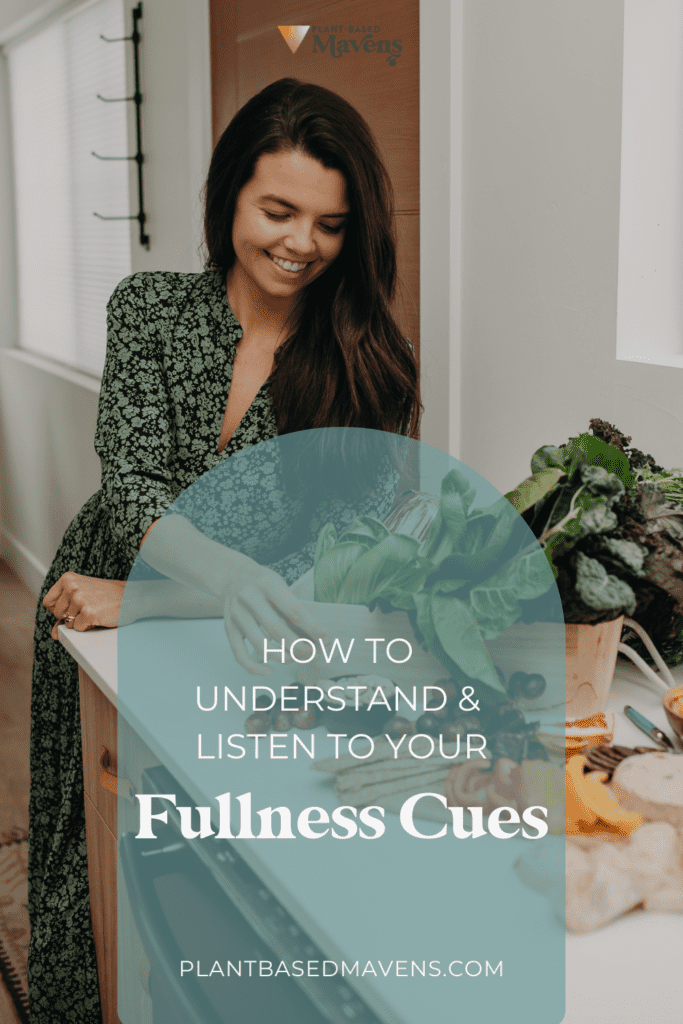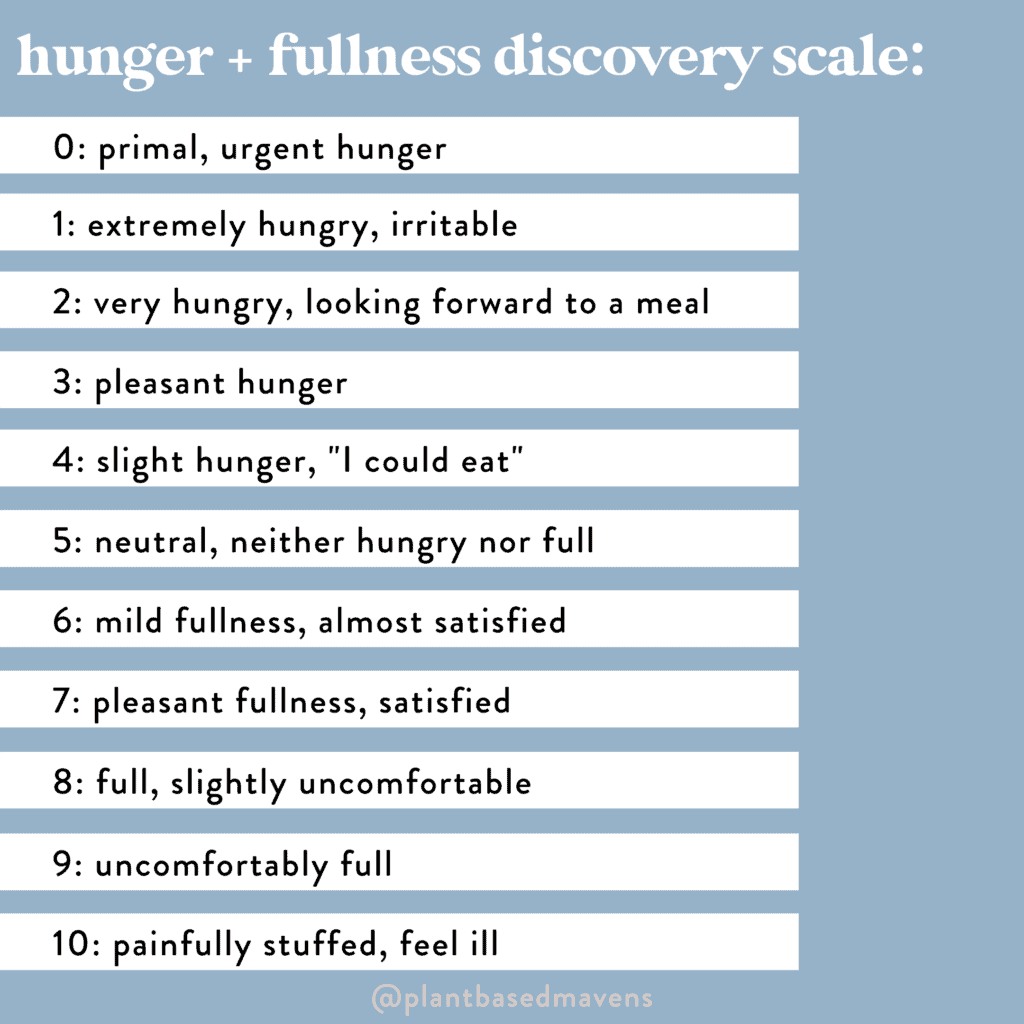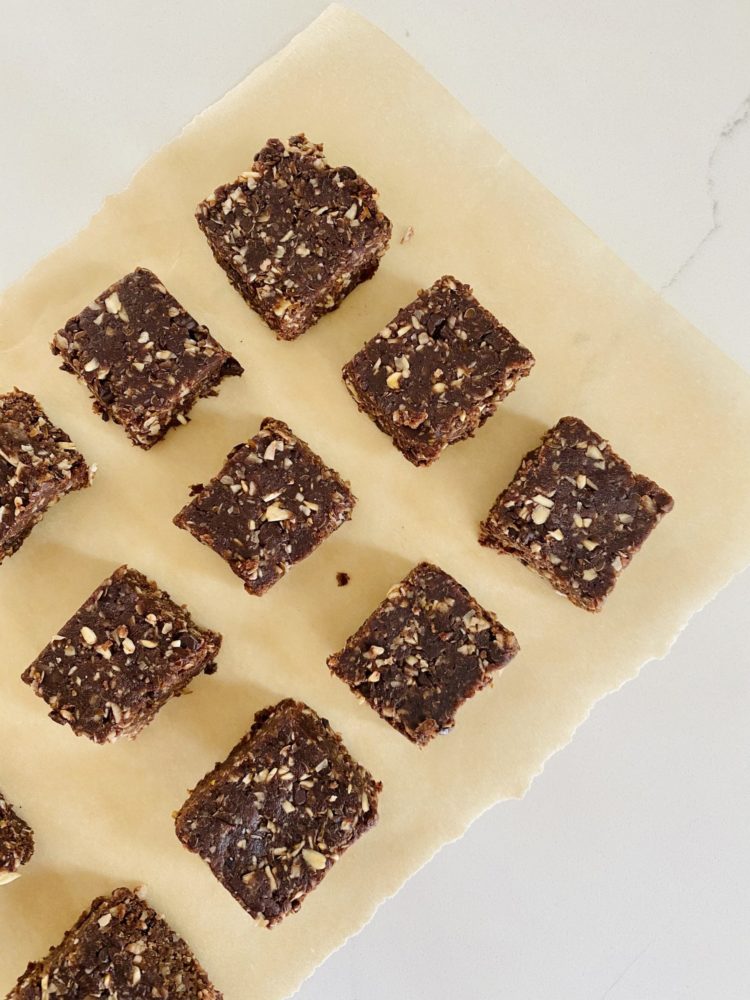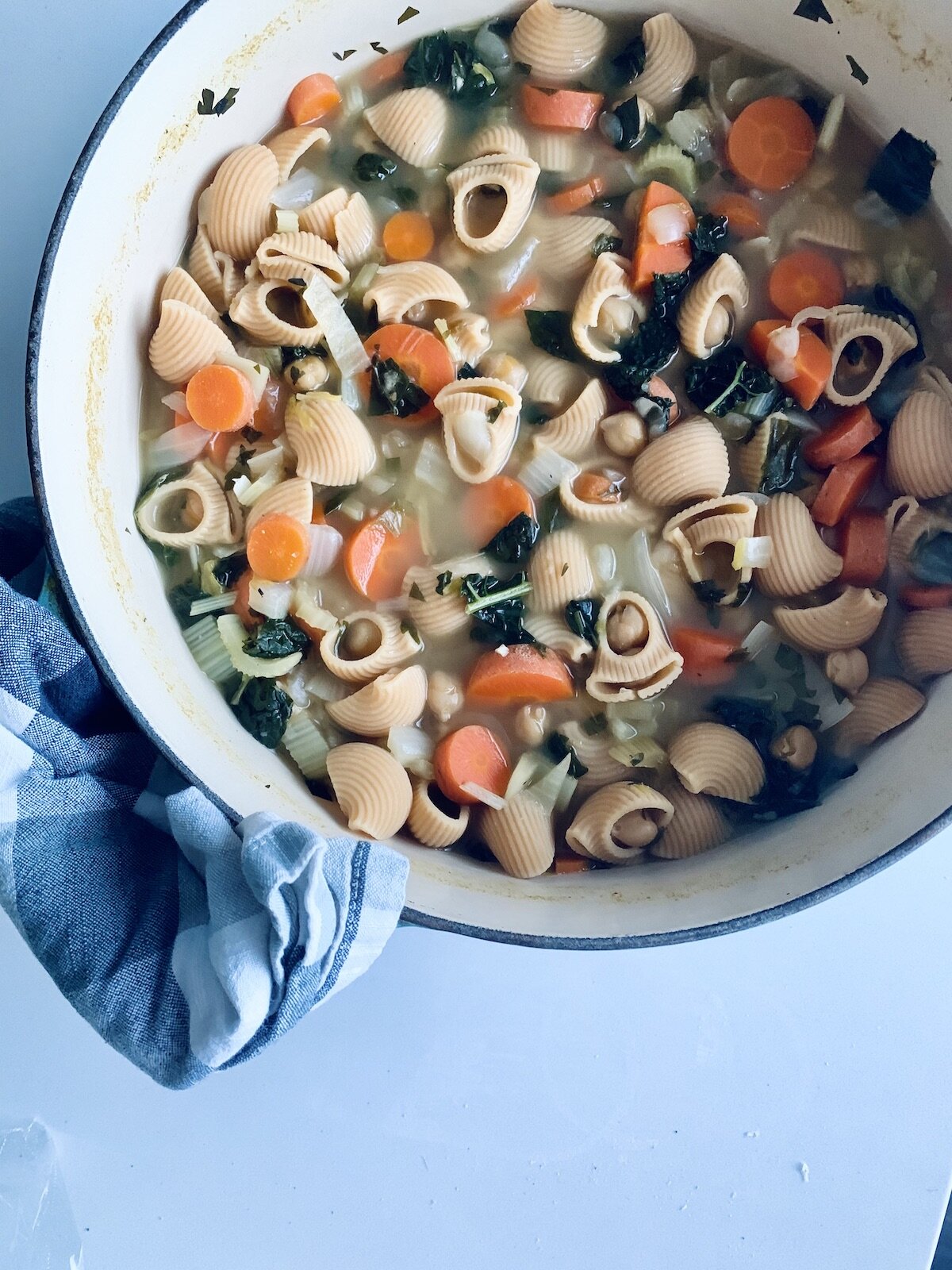We’ve all done it. Eating past the point of comfortable fullness isn’t just reserved for Thanksgiving. Many situations can lead to us ignoring our body’s fullness cues and eating to the point of extreme fullness or feeling stuffed. Today we’re going to talk about four ways you might be overriding your fullness cues and three steps you can take to start to understand and listen to your fullness cues. After all, eating should feel good – not uncomfortable.

What are fullness cues?
First, what are fullness cues? Fullness cues are signals from your body that indicate that you have eaten enough food and are satisfied. They signal that your nutritional needs and your pleasure needs have been met. These cues can vary from person to person. Paying attention to these cues helps you maintain a healthy relationship with food and avoid overeating.
Tuning into your fullness cues requires some level of mindful awareness so you can recognize the signals from your body. Listening to your body’s signals and responding accordingly can help you establish body respect and a more peaceful relationship with food. By tuning into your body’s signals, you can learn to trust your own internal wisdom when it comes to eating and nourishing yourself.
What are signs of being full?
Signs of fullness vary from person to person. Some common fullness signals include a warmth or pleasant weight in your stomach, a decrease in appetite, a decline in pleasure from your meal, and experiencing a sense of satisfaction or completeness. Physically, you may experience a feeling of stomach expansion, discomfort, or even pain if you have overeaten.
It’s important to pay attention to how your body feels compared to when you first started eating, as well as how the food tastes to you. Tuning in to these cues and honoring your body’s signals is a key step on the path to intuitive eating. If you are struggling to recognize these signs, consider seeking guidance from a Registered Dietitian to help you along your journey towards a healthier relationship with food. Remember, this is a process of learning and growing, and it’s okay to make mistakes along the way! Even the most intuitive eaters override their fullness signals sometimes.
Intuitive Eating Hunger Fullness Scale: What it Is and How to Use It
The Intuitive Eating Hunger Fullness Scale is a valuable tool that can help you tune into your body’s cues and make more mindful choices when it comes to eating. I call this scale the “Hunger and Fullness Discovery Scale” because moving along the scale and feeling each point in your body is a process of trial & error and discovery. The scale ranges from 1 to 10, with 1 being extreme hunger and 10 being overly full. By using this scale, you can better understand your body’s signals and respond to them in a way that honors your hunger and fullness levels.
How to use the Hunger Fullness Scale
We’ll talk more about using this scale in the steps below, but an easy way to start familiarizing yourself with it is to begin by anchoring yourself at the neutral point of #5. This is a point of total neutrality where you are neither hungry nor full. What does this indifference about food feel like? You might think, “I’m not hungry, but I guess I could eat.” From there, you can move up or down the scale to assess your level of hunger or level of fullness. Pay attention to physical sensations (stomach sensations, energy level) and thoughts that come up about food (declining interest, desire to move on to your next activity) to help guide you in determining where you fall on the scale.
It’s important to note that the hunger fullness scale is not about being perfect or getting it “right” every time. It’s about being curious and responsive to your body’s needs without judgment. If you find yourself struggling to use the scale or feeling overwhelmed, consider reaching out for support from an anti-diet or intuitive eating-trained registered dietitian who can help guide you on your intuitive eating journey. Remember, intuitive eating is a process of learning to trust your body and rediscover the pleasures of eating, so be patient with yourself as you navigate this new way of thinking about food.

To learn more about using this as a hunger scale to attune to your level of hunger, read this post.
4 Reasons Why You Might Ignore Your Fullness Cues
We override the feeling of fullness for many reasons:
- Distracted eating (scrolling on our phones, watching TV, tending to kiddos) which leaves us disconnected from our bodies
- Using external factors to tell us when to stop eating – like cleaning our plate, only stopping when the package we’re eating out of is empty, or following food rules
- Beginning meals in a state of ravenous hunger due to many reasons including a chaotic lifestyle, disordered eating, or dieting
- Not wanting to face the emotions that can often accompany the end of a really pleasurable eating experience
Reflect on a few times when you ate past the point of fullness. Was it because of one of these reasons, or a different reason?
How Dieting Impacts Fullness Cues
Dieting can have a significant impact on our ability to tune into our fullness signals. When we restrict our food intake or follow strict diet plans, we may override our body’s natural signals of fullness. This can lead to oscillating between feelings of constant hunger and extreme fullness.
When we are focused on following external rules, it can be challenging to listen to our bodies and recognize when we reach a comfortable fullness level. This can create a disconnect between our physical sensations of fullness or hunger and our beliefs about what we “should” be eating.
Diet culture often promotes the idea of eating specific portion sizes or sticking to certain meal plans, regardless of our individual hunger and fullness cues. This can lead to a mindset of ignoring our body’s signals and following external rules instead. This is a common struggle for chronic dieters.
In the long run, consistently ignoring our fullness cues can lead to overeating or undereating, as we lose touch with our body’s natural ability to regulate food intake. It is important to be mindful of how dieting can impact our fullness cues and strive to reconnect with our body’s signals of hunger and fullness in a more intuitive way. To learn more about how to get out of the diet cycle, read this post.
3 Steps To Listening To Your Fullness Cues
Now that you’re noticing why you’re overriding feelings of fullness, let’s talk about how to reconnect with them. Like hunger, tuning in to your fullness is about:
- strengthening your mind/body connection and rebuilding trust with yourself
- removing blocks that might be preventing you from receiving your body’s signals
The key to being able to tune in to your fullness and stop eating when you’re comfortably full is knowing that you have unconditional permission to eat when you are hungry again. This requires some level of making peace with food. If you are still restricting or otherwise trying to control your food intake, it’s going to feel very difficult for you to stop eating because your body and mind don’t trust that you’ll allow yourself to eat again when you are hungry. So, establishing that baseline trust that you will honor your hunger signals when it comes around again is very important. If you haven’t yet read this post about honoring your hunger cues, I recommend pressing pause and reading that one first.
Step 1: Identify what comfortable fullness feels like for you.
Many people just don’t know what comfortable fullness feels like because they are constantly in a state of being overly hungry from dieting or distraction, or in a state of being uncomfortably full from overeating. How does “comfortably full” feel to YOU? Envision the feelings you desire after a meal. Maybe it’s feeling satisfied or feeling energized.
Step 2: Strengthen the mind/body connection.
This step requires some mindful eating strategies. You’ll do this in two ways:
Create an eating environment that allows you to be present.
Most of us are so used to eating on auto-pilot, but tuning in to fullness requires mindful awareness at first. If possible, put your phone away, turn off the TV, and step away from your desk when eating. Take a deep breath before beginning to bring yourself into the present moment. The goal is to create mental space so that you can fully pay attention to your meal and how your body feels. It’s up to you to decide the best way to establish a calmer eating environment based on what works for your life.
Take a mindful pause midway through your meal.
The purpose of the pause is to check in with how the food is tasting. Is it worthy of your tastebuds? It’s also an opportunity to assess where you are at on the Hunger Fullness Scale. The ultimate goal is to eat until you are at a 7 on the scale, or pleasantly full. If you find that you aren’t pleasantly full yet, then continue eating.
Step 3: Allow yourself to grieve the end of an eating experience
This might sound silly, but it’s not! Food is a pleasurable experience, and when pleasurable experiences end, feeling sad is totally normal. Acknowledge your sadness and remind yourself that you have unconditional permission to eat again when you are hungry and to eat these exact foods again in the future. If you’ve ever heard yourself say, “I’m so full, but it’s so good that I can’t stop”, this step will be extremely helpful. Remind yourself that as soon as you override those fullness cues, that pleasurable experience starts to tip over into a negative experience.
Are you an intuitive eater? Take the quiz to find out!
Take the Plant-based Intuitive Eating Quiz and find out if you’re stuck in diet mentality or an intuitive eating pro. (Plus, what to do next to have a better relationship with food.)


